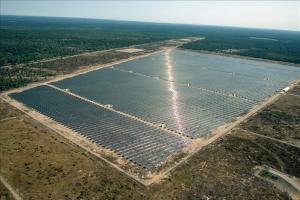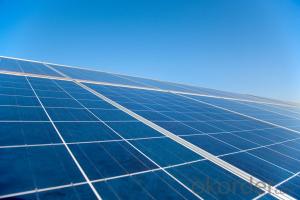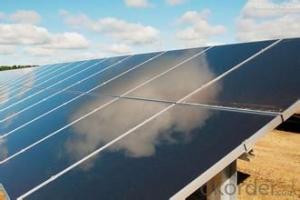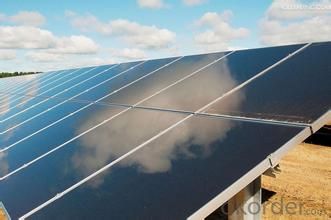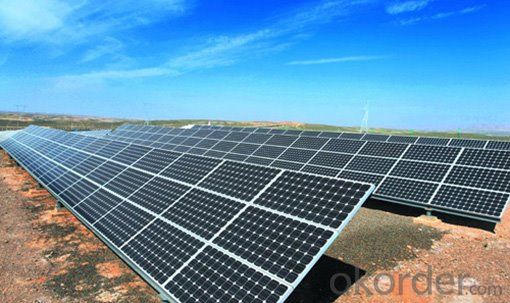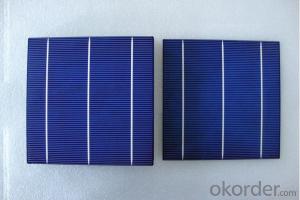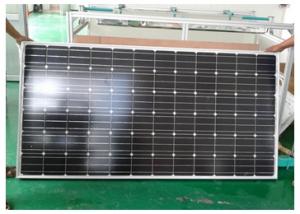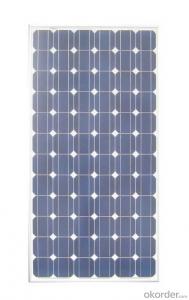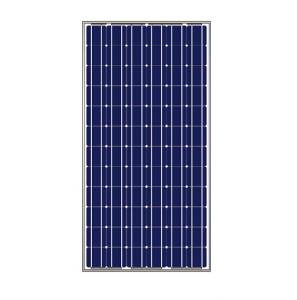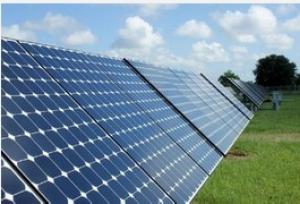FS-M180-72 Six Junction Solar Cells Home Use Mono Solar Module 180W
- Loading Port:
- Shanghai
- Payment Terms:
- TT OR LC
- Min Order Qty:
- 11 watt
- Supply Capability:
- 111111 watt/month
OKorder Service Pledge
OKorder Financial Service
You Might Also Like
1.Structure of Solar Module Description
The solar module is an off-gird solar power generator, designed to provide stable and reliable electricity to homes and communities without access to grid electricity or to those regions where are short of power or even without power. The solar module is convenient to move, easy to set-up with reliable performance, making it ideal for situations where emergency power is required. It is an ideal & reliable energy source for a wide variety of applications, ranging from lighting , radios, fans ,televisions ,computers ,refrigerator. The USB port is compatible with all 5V-USB charged devices. It can also act as a back-up power source during emergency situations.
2.Main Features of the Solar Module
1).High conversion efficiencies resulting in superior power output performance.
2).Outstanding power output even in low light or high temperature conditions
3).Optimized design for ease of soldering and lamination
4).Long-term stability,reliability and performance
3.Solar Module Images
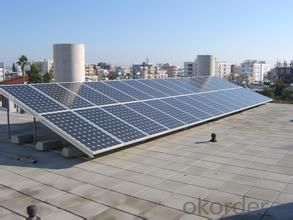
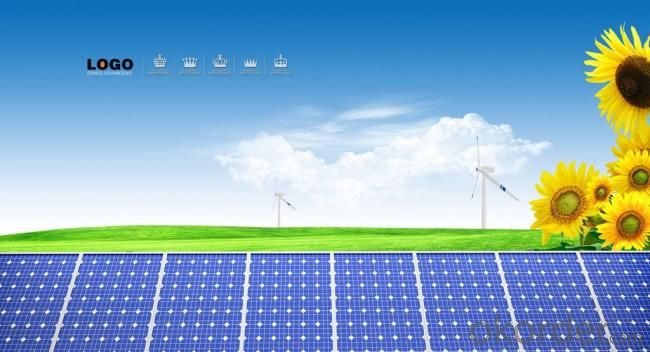
4.Solar Module Specification
Material: molycrystalline silicon
Maximum power: 180W
Cell type: molycrystalline silicon 125mm*125mm
Size: 1580*808*35mm
Number of cells: 72 pieces
Voltage: 1,000V DC
| Maximum power voltage(Vmp) | 36.00V |
| Maximum power current(Imp) | 5.00A |
Open circuit voltage(Voc) | 44.80V |
| Short circut current(Isc) | 5.29A |
| Operating temperature | 44.4±2Co |
Temp.Coeff.of Isc(TK Isc) | 0.06%/ C |
| Temp.Coeff.of Voc(TK Voc) | 0.397%/ C |
| Temp.Coeff.of Pmax(TK Pmax) | 0.549%/ C |
| Weight | 14.5KG |
5.FAQ of Solar Module
1). Q: Are you a factory or trading company?
A: We are a factory.
2). Q: Where is your factory located? How can I visit there?
A: Our factory is located in Jiangyin, Jiangsu, China, near Shanghai. You are warmly welcomed to visit us!
3). Q: How can I get some samples?
A: Please connect me for samples
4). Q: Can the price be cheaper?
A: Of course, you will be offered a good discount for big amount.
- Q: Can solar cells be used for powering concert venues?
- Yes, solar cells can be used for powering concert venues. Solar cells, also known as photovoltaic cells, convert sunlight into electricity. Concert venues typically require a significant amount of energy for lighting, sound systems, and other equipment. By installing solar panels on the venue's roof or in nearby open spaces, the electricity generated can be used to power the venue. This not only reduces dependence on fossil fuels but also helps to lower energy costs and minimize the venue's carbon footprint.
- Q: How do solar cells perform in areas with frequent earthquakes?
- Solar cells can generally perform well in areas with frequent earthquakes as they do not have any moving parts and are not typically affected by ground vibrations. However, it is essential to ensure that the solar panels are properly installed and secured to withstand potential damages caused by seismic activities. Additionally, regular maintenance and inspections may be necessary to ensure the structural integrity of the solar system in earthquake-prone areas.
- Q: How can the solar power change our life by using solar cells material?
- Because solar power is basically cost-saving compared to the other traditional power/energy generation method.
- Q: What materials are commonly used in solar cells?
- Some common materials used in solar cells include silicon, cadmium telluride, and copper indium gallium selenide.
- Q: How do solar cells perform in areas with frequent tornadoes?
- Solar cells can still perform efficiently in areas with frequent tornadoes as they are designed to withstand extreme weather conditions. However, the installation and mounting of solar panels in tornado-prone regions should be done with utmost care and consideration of local building codes to ensure their resilience against high winds. Additionally, regular maintenance and inspection of the solar panels may be required to address any potential damage caused by tornadoes.
- Q: What happens to excess electricity generated by solar cells?
- Excess electricity generated by solar cells can be stored in batteries for later use, fed into the power grid to offset energy consumption, or utilized to power other devices or systems within the property.
- Q: Can solar cells be used in disaster relief efforts?
- Yes, solar cells can be used in disaster relief efforts. Solar cells provide a reliable and sustainable source of electricity, which is crucial in disaster-stricken areas where power infrastructure is damaged or non-existent. Solar panels can be quickly deployed to provide immediate access to electricity for emergency services, communication devices, medical equipment, and lighting in disaster response centers, hospitals, and temporary shelters. They are also cost-effective and environmentally friendly, offering long-term benefits for affected communities during the recovery and rebuilding process.
- Q: Can solar cells be used for powering disaster relief operations?
- Yes, solar cells can certainly be used for powering disaster relief operations. Solar cells, also known as photovoltaic cells, convert sunlight into electricity, making them a reliable and sustainable source of power. In disaster-stricken areas where the conventional power grid may be disrupted or unavailable, solar cells can provide a clean and renewable energy solution. They can be used to charge batteries, power communication devices, run medical equipment, and provide lighting and electricity for essential services such as shelters, water purification systems, and refrigeration for medical supplies. Furthermore, solar cells are portable and can be easily deployed to remote or inaccessible areas, making them an ideal choice for disaster relief efforts.
- Q: Can solar cells be used for powering agricultural irrigation systems?
- Yes, solar cells can be used for powering agricultural irrigation systems. Solar energy can be harnessed by installing solar panels that convert sunlight into electricity, which can then be used to power pumps and other equipment necessary for irrigation. This renewable energy source offers a sustainable and cost-effective solution for powering agricultural practices, especially in areas with limited access to electricity.
- Q: How can I describe solar cells in a simple way?
- I would say – a solar cell is just a kind of new energy.
Send your message to us
FS-M180-72 Six Junction Solar Cells Home Use Mono Solar Module 180W
- Loading Port:
- Shanghai
- Payment Terms:
- TT OR LC
- Min Order Qty:
- 11 watt
- Supply Capability:
- 111111 watt/month
OKorder Service Pledge
OKorder Financial Service
Similar products
Hot products
Hot Searches
Related keywords
